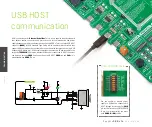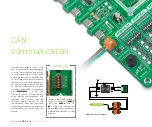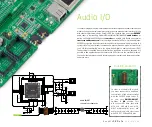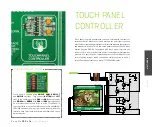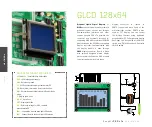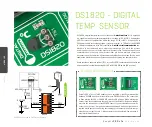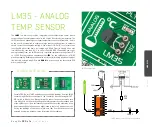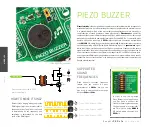
E a s y M x
P R O
v 7 a
U s e r M a n u a l
P A G E 36
ADC INPUTS
Digital signals
have
two discrete states
, which are decoded as
high
and
low
, and
interpreted as
logic 1
and
logic 0
.
Analog signals
, on the other hand, are
continuous
, and
can have any value within defined range.
A/D converters
are specialized circuits which can
convert analog signals (voltages) into a digital representation, usually in form of an
integer
number
. The value of this number is
linearly dependent
on the input voltage value. Most
microcontrollers nowadays internally have A/D converters connected to one or more input
pins. Some of the most important parameters of A/D converters are
conversion time
and
resolution
. Conversion time determines how fast can an analog voltage be represented in
form of a digital number.
This is an important parameter if you need fast data acquisition. The other parameter is
resolution. Resolution represents the number of discrete steps that supported voltage range
can be divided into. It determines the sensitivity of the A/D converter. Resolution is represented
in maximum number of bits that resulting number occupies. Most microcontrollers have
10-bit resolution, meaning that maximum value of conversion can be represented with 10
bits, which converted to integer is 2
10
=1024. This means that supported voltage range, for
example from 0-1.8V, can be divided into 1024 discrete steps of about 1.758mV. EasyMx
PRO v7a provides an interface in form of potentiometer for simulating analog input voltages
that can be routed to any of the 5 supported analog input pins..
ADC input schematic
Enabling ADC inputs
MODULES
ADC INPUT module view
P1
10K
R42
220
J8
C28
100nF
PC0
PA3
PA6
PA4
PA5
VCC-1.8V
C42
100nF
VCC-1.8V
DATA BUS
In order to connect the output of the
potentiometer
P1
to
PA3
,
PA4
,
PA5
,
PA6
or
PC0
analog microcontroller
inputs, you have to place the jumper
J8
in the desired position. By moving
the potentiometer knob, you can create
voltages in range from
GND
to
VCC
.

